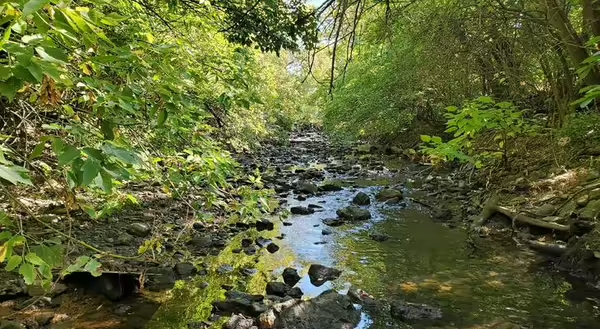
The lakes, rivers, and streams of Illinois are places of beauty. They’re also essential to life.
Without clean water, there are no picnics on the beach, no fishing or taking the boat out, no geese paddling or ducks dabbling, and in worst-case scenarios, no water coming out of the faucet whenever you turn the handle.
Whether you're a local landowner, a concerned citizen, a steward of the environment – or all three – everyone can have a role in safeguarding the environment and public health from nutrient pollution.
Nutrient pollution in Illinois waterways is complicated. The nutrients nitrogen and phosphorus enter waterbodies from a wide variety of sources and are then carried downstream. Nutrient pollution happens when excess amounts of these nutrients promote algal growth and impair local ecosystems, which can make water unsuitable for drinking, recreation, fishing, and aquatic life. Excess nutrients also contribute to the “dead zone” in the Gulf of Mexico, where aquatic life struggles to survive due to low oxygen levels impacting fishing and tourism industries.
Explore more about nutrient loss in Illinois by watching the “Empower Illinois: Strategies to Reduce Nutrient Pollution and Protect Waterways” presentation for information and tools to help you contribute to healthy waterways in your community.
How you can help reduce nutrient loss
- Farmers and farmland owners can apply practices that reduce nutrient loss, such as changing fertilization timing, reducing tilling, growing cover crops, and installing wetlands. Explore more agricultural conservation practices.
- Nature-based solutions like rain gardens can intercept and filter stormwater runoff, while raking leaves can reduce phosphorus pollution loads. Explore more stormwater practices.
Did we muddy the waters about nutrient loss? Keep reading for some FAQs about nutrient loss in Illinois, including priority watersheds.
Have a question we don’t cover? Get in touch with Illinois Extension staff who work on nutrient loss, and check out our Nutrient Loss Reduction website.
FAQs about nutrient loss in Illinois
What is nutrient pollution, and where does it come from?
Nutrient pollution is caused by excess nitrogen and phosphorus entering water bodies from various sources. Illinois has a lot of agricultural land and several major metropolitan areas, so its nutrient strategy focuses on reducing nutrients from three source sectors — agricultural sources, point sources, and urban stormwater sources — and collaborates with partners from each.
Nutrients are often categorized by their point of origin. A point source is a readily identifiable location, such as a pipe, where treated water is discharged from municipal or industrial facilities into receiving streams. A non-point source is an input from multiple locations, such as urban or agricultural runoff.
Why is nutrient pollution a problem?
Excess nitrogen and phosphorus in waterways promote algal growth. As algal blooms decompose, they remove oxygen from the water, resulting in hypoxia. Large hypoxic areas are often called “dead zones” because the low oxygen levels cannot support normal populations of aquatic life. The Gulf of Mexico, near where the Mississippi River drains is the largest dead zone in the U.S., and the second largest in the world. The National Oceanic and Atmospheric Administration calculates that the dead zone costs the U.S. seafood and tourism industries a combined $82 million a year.
Locally, excess nutrients can impair drinking water quality, harm aquatic life, and cause harmful algal blooms, which close sites and limit recreational opportunities. Nutrient loss from agricultural lands is both an economic and environmental issue. Fertilizer provides nutrients that promote crop growth, but it is expensive. If fertilizer is not kept in the field where plants can access it, the producer has a lower return on investment.
What is the Illinois Nutrient Loss Reduction Strategy?
Illinois is one of 12 states that have developed nutrient strategies as members of the Mississippi River/Gulf of Mexico Watershed Nutrient Task Force, also known as the Hypoxia Task Force. The U.S. Environmental Protection Agency created this task force and the 2008 Gulf Hypoxia Action Plan to address the hypoxic “dead zone” in the Gulf of Mexico. An executive summary of the 2023 update to the Illinois NLRS is available at go.illinois.edu/NLRS.
About the Author
Emily Steele serves on the Illinois Extension communications team, supporting natural resources, environment, and energy staff statewide including the Master Naturalist program, weather and climate, forestry, invasives, and nutrient loss reduction. She has a M.S. in Natural Resources and Environmental Sciences from University of Illinois and a B.A. in Journalism from Eastern Illinois University.
About the Blog
Naturalist News is a blog by University of Illinois Extension Master Naturalist staff and volunteers who bring you stories highlighting the individuals, places, wildlife and plants that make this state amazing. Join us each week to learn something new, be inspired and become connected to your own community by recognizing the amazing ways we are all intertwined.